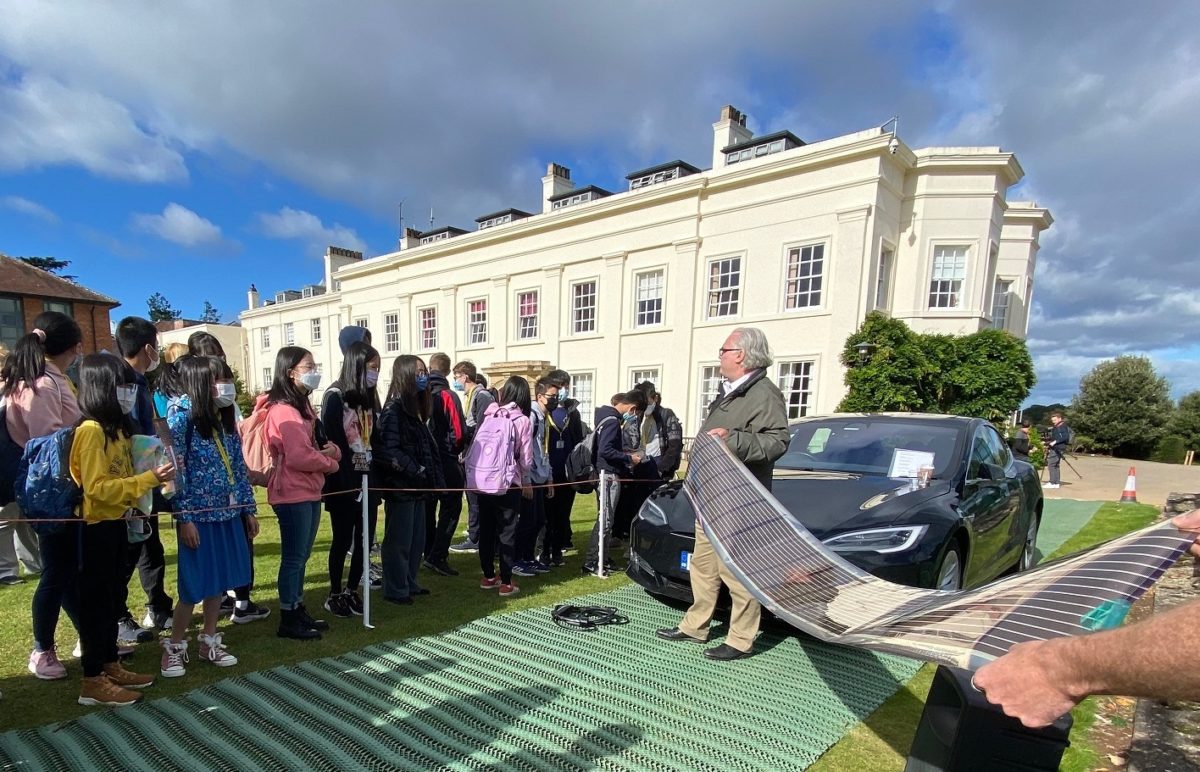In a fresh take on the solar car concept, a team of scientists from Sydney’s north will test printed organic photovoltaic panels by embarking on an 84-day journey around Australia.
The team plans to charge an electric Tesla vehicle (EV) by unrolling 18 flexible panels beside the car forming an off-grid charging system. The organic solar cells being deployed have been printed on laminated polyethylene terephthalate (PET) plastic by a printer formerly used for wine labels.
The 18-meter long ultralight and ultraflexible strips are similar in thickness and appearance to a chip packet, the university team has said. The project will see the technology’s performance and durability tested in the real world, while also offering the team an opportunity to educate along the way.
The Charge Around Australia project is set to embark in September and is a partnership between the UK company Charging Around Britain Ltd and the University of Newcastle’s Centre for Organic Electronics, where the printed solar cell technology was developed by Professor Paul Dastoor and his team.

“This is actually an ideal testbed to give us information about how we would go about using and powering technology in other remote locations, for example, in space,” Professor Dastoor told Reuters about the project.
The main challenges for printed organic photovoltaics are efficiency and durability, the Charge Around Australia project notes. It says extensive economic modeling has found that even with modest device efficiency and lifetimes, large area oriented solar technology can compete with coal-generated power.
It says the projected efficiency of a pilot-scale installation of the technology is around 1%–2% with a lifetime between one and two years and for manufacture at scale, this would correspond to a cost of electricity as low as $0.88 per kWh.
Popular content

The university team says its technology can be manufactured at a production cost of less than $10 per square meter and can rapidly be produced, with commercial-scale equipment capable of printing kilometers of material a day.
“No other renewal energy technology can be manufactured as quickly. The low cost and speed at which this technology can be deployed is exciting as we need to find solutions, and quickly,” Professor Dastoor said.
Over 99% of the panels are made from polyethylene terephthalate (PET) plastic, for which the Newcastle team is currently looking into recycling processes. “Our hope is that we can separate the outer PET layers and reuse them to make new panels with minimal processing,” Professor Dastoor said.
The technology has already been deployed in the form of a solar arbour in Sydney’s Lane Cove, which opened in June 2020.
The low-cost, lightweight, flexible solar technology could hold promise for a range of applications including disaster relief and recovery; retractable recharging systems for electric vehicles, caravans, camping and the defense industry; floating covers for dams and pools; yacht sails; smart blinds for residential and high-rise buildings; greenhouse covers and more, the Newcastle University team have said.
In the Charge Around Australia project, the team is aiming to dispel “range anxiety” around electric vehicles and prove how efficient solar technology can be at car charging. The project will also see scientists visit around 70 schools to teach students about renewable energy technologies and future potential.
This content is protected by copyright and may not be reused. If you want to cooperate with us and would like to reuse some of our content, please contact: editors@pv-magazine.com.



3 comments
By submitting this form you agree to pv magazine using your data for the purposes of publishing your comment.
Your personal data will only be disclosed or otherwise transmitted to third parties for the purposes of spam filtering or if this is necessary for technical maintenance of the website. Any other transfer to third parties will not take place unless this is justified on the basis of applicable data protection regulations or if pv magazine is legally obliged to do so.
You may revoke this consent at any time with effect for the future, in which case your personal data will be deleted immediately. Otherwise, your data will be deleted if pv magazine has processed your request or the purpose of data storage is fulfilled.
Further information on data privacy can be found in our Data Protection Policy.